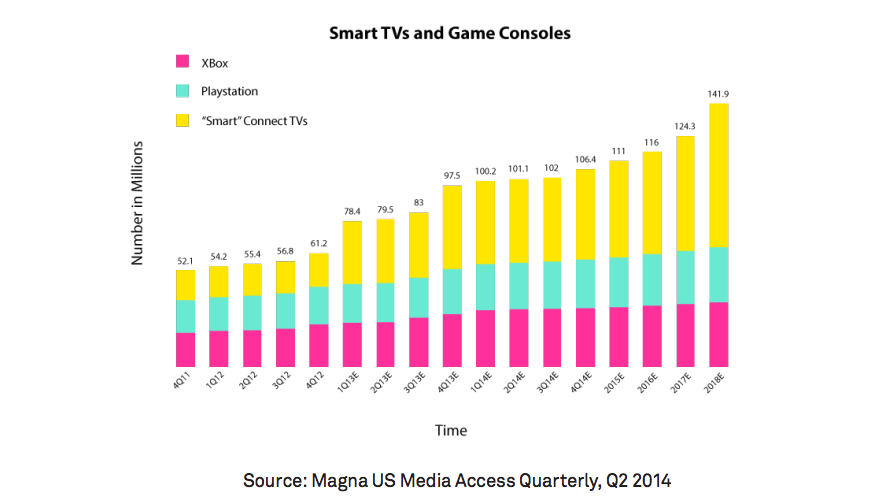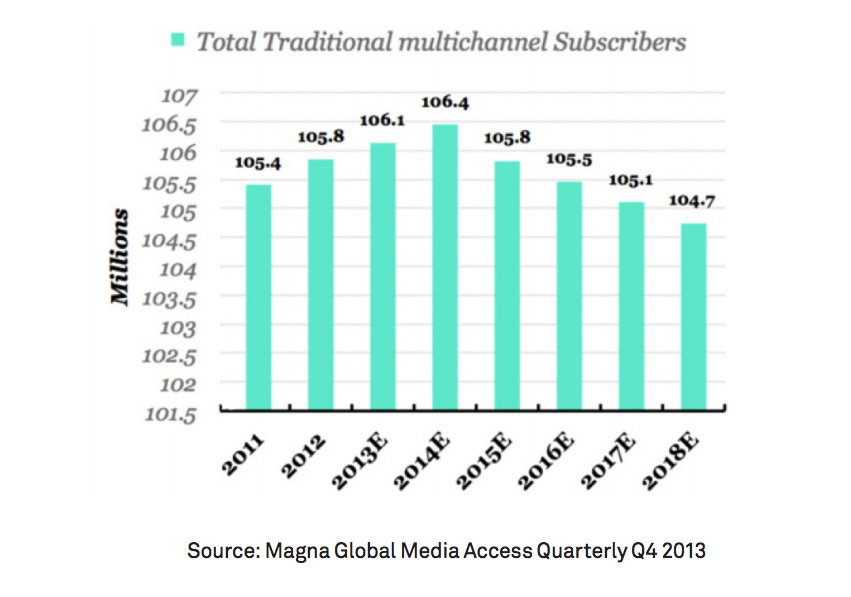With the rapid rise of content-streaming services like Netflix and Hulu, terms like “cord-cutting” and “over-the-top (OTT) services” have also entered our lexicon. But how far will those new OTT services go in transforming the way we consume media content? Let’s look at two telling graphics from our recently published white paper on the OTT market.

As the chart indicates, connected platforms supporting OTT services are clearly forecasted to increase. “Smart” connect TVs, in particular, will see significant adoption in the next few years, thanks to the increasingly common partnerships between television manufacturers and streaming device makers like Roku.

The proliferation of OTT platforms and services means a gradual decrease in the number of total traditional multichannel subscribers, with 2014 potentially being the tipping point. If these predications stand, the industry would soon be feeling the huge impact of OTT companies.
For more in-depth analysis and insight on the OTT market, download our white paper here.
